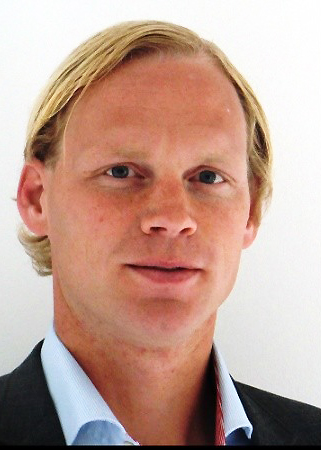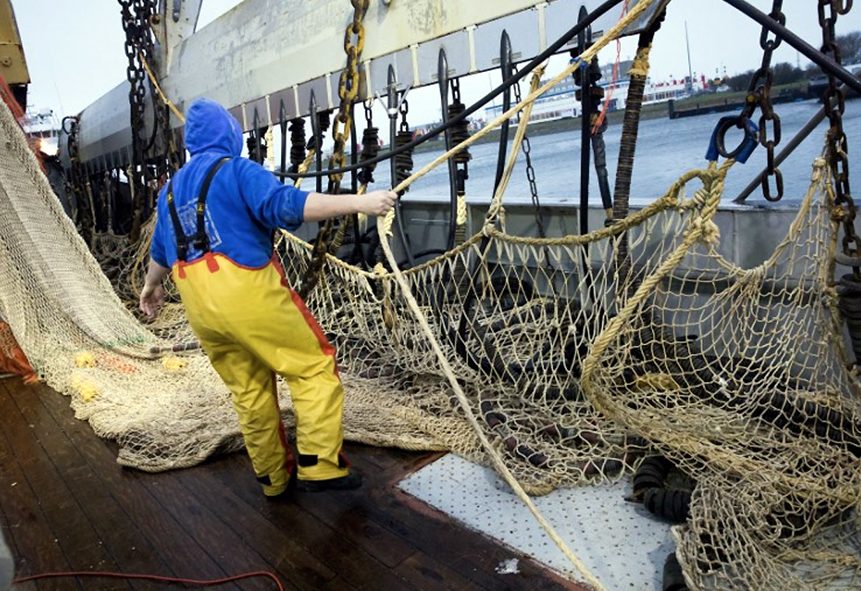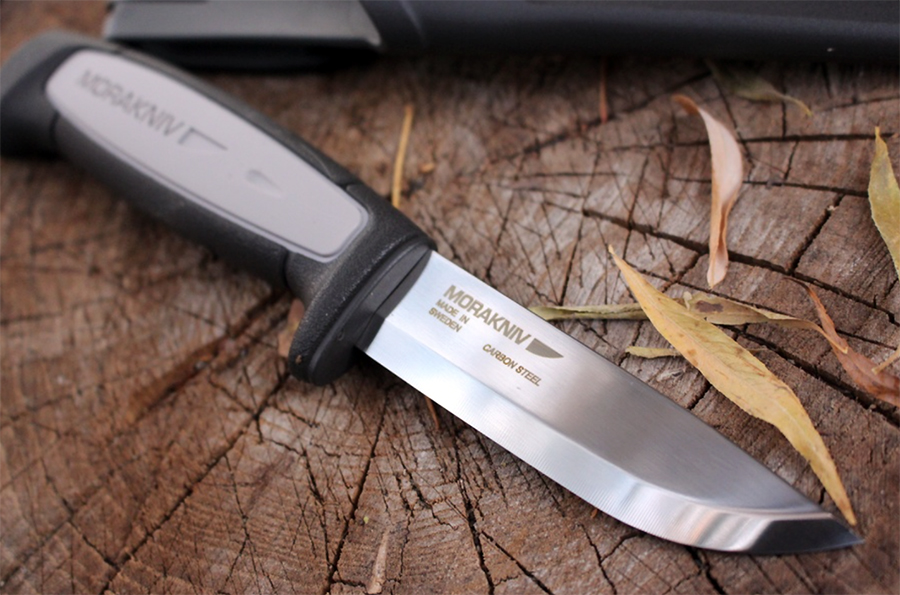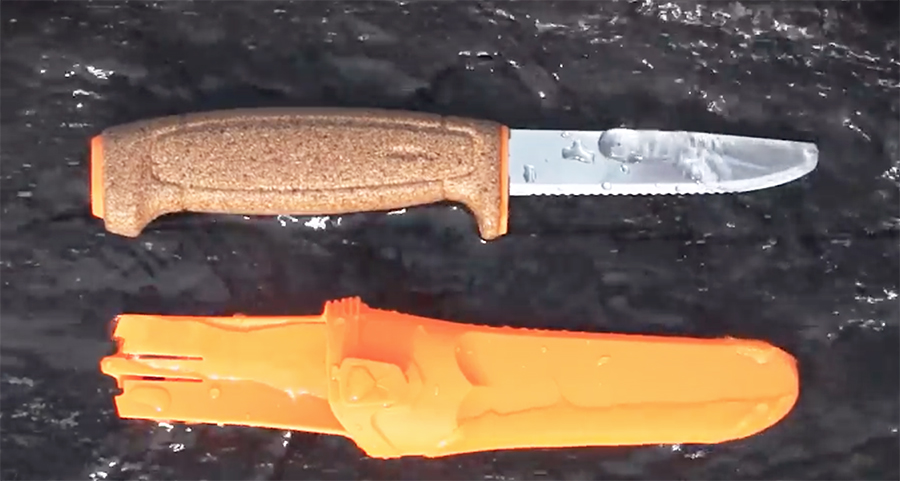 <span style="color: #333333;">Morakniv Floating Serrated Knife, pictured above, received the distinguished honor last month of winning the Scandinavian Outdoor Award at Outdoor in Friedrichshafen.
<span style="color: #333333;">Morakniv Floating Serrated Knife, pictured above, received the distinguished honor last month of winning the Scandinavian Outdoor Award at Outdoor in Friedrichshafen.
The award is given to products based on functionality, quality, innovation, design and sustainability. We spoke with with Björn Åkerblom, pictured left, global sales and marketing director for Morakniv, from his home desk in Sweden yesterday, to learn more about the award-winning knife and why Morakniv is world-renowned for manufacturing high-quality knives since 1891.
Where are Morakniv’s sold? 70 percent of production is sold in Sweden, with the remaining 30 percent sold in roughly 65 countries, with the largest customer base in Scandinavia and the U.S.
What is the background and R&D behind the Floating Serrated Knife? Fish farms are prevalent in coastal Norway, which is a big market for us. Huge nets are used to catch mainly Salmon. The fishermen have been asking us for a floating knife for a long time. They use our existing companion knives and love them, but when they drop the knife by mistake into the water, it sinks and potentially will cut open the net, so they need to send divers down to pick them up. That’s very expensive.
From the start, it took about two years to finish the product. The fishermen from Norway have been involved in the development process since the beginning–testing and providing feedback on the adjustments that were needed.
How is the knife affixed into the cork and poly? Is it a single piece of forged metal? Yes. First, they make the blade thinner and a bit shorter to reduce weight. And the tang goes almost all the way to the back and is also thinner to reduce weight. To make it more robust to withstand force, we first have a core in the handle that we injection mold with a polymer that is really hard. The cork handle goes around that, and at the back of it, you have polymer that is attached both with glue and mechanically to attach to the core to keep the handle in place. Click on the Floating Knife image below left and watch the video.
Cork expands and contracts. How do you preserve the cork against the harsh elements from getting brittle and breaking apart? Most of the world’s cork comes from Portugal. We use the remains of cork material and grind it into small pieces, mix with a type of resin to create a soft solution that is injection-molded, then heat-set to create the shape you want. You maintain the lightness of the cork, but with the resin, we enable it to withstand the harsh conditions of the water.
Why a serrated blade? We developed the knife for a specific purpose.The fishermen keep their knives on their body and use it to cut different nylon ropes and nets. The serrated knife is so much faster and much more efficient, and the knife will continue to cut even if the edge of the blade gets a little bit dull than a normal blade. And, also, the rounded tip is hard and tough and will not cut into things it shouldn’t when you are out on the rough sea.
How is the serrated edge sharpened? It is serrated on one side. The other side is like a standard edge, which means that quite a few times you can re-sharpen the knife.
Are you working on other applications for the knife outside the fishing category? We have a successful technique now for making floating knives with cork material. And we have discussed that we will add more models in the future with a similar construction of the handle, but with different blades for more of an outdoor focus.
What is the brand message for someone thinking about buying the knife? The knife is intended for marine use. If you are an outdoor enthusiast, quite often you use different types of ropes and nylon material, and this is a much better knife for that purpose. From that standpoint, it’s the perfect blade. If you need a knife for preparing food or cutting wood, then you need a normal, sharp-tipped edge blade.
 Morakniv produces fantastic knives at very, very good price points. Clearly you punch above your weight class when it comes to the prices you sell your knives for. How are you, as a brand, able to transmit that message that with the price you are paying, you are getting way more and way better of a knife It is essential in everything we do. There are pros and cons in this. It’s one of our core selling points. Whether you buy the highest or lowest priced knife, you should always get extremely high quality for the money.
Morakniv produces fantastic knives at very, very good price points. Clearly you punch above your weight class when it comes to the prices you sell your knives for. How are you, as a brand, able to transmit that message that with the price you are paying, you are getting way more and way better of a knife It is essential in everything we do. There are pros and cons in this. It’s one of our core selling points. Whether you buy the highest or lowest priced knife, you should always get extremely high quality for the money.
Brands from your region of the world are becoming more popular. Morakniv has had an international presence for a very long time. Have you seen an uptick of notability in your brand as geographically related brands have become more popular? Yes, for sure.
Outdoor in general is a growing interest around the world. There are a lot of Scandinavian brands that are well-known in the outdoor community; that helps us as well because Scandinavia, as a region, has become very, very strong, especially in the outdoor space. So, when we go into the outdoor space, it does help us also be a strong brand from Scandinavia.
What do you think are the driving factors towards the growing global interest in Scandinavian brands? There a few aspects. We live in tough, hard weather conditions. So, if the brand products work here, especially in northern Scandinavia, people will know that a brand/product will work everywhere else. This, combined with the fact that Scandinavians are considered to be an outdoor people, because we do spend a lot of time outdoors, that they know what they are talking about. The third, we are well-known worldwide as high-quality, effective manufacturers of products in general.There is an inherent trust in the quality of the products.
The success of a knife company is dependent on people using knives. How do you view your brand’s efforts expanding the use of knives–knife participation–and understanding that knives should be used as a more frequent tool? Scandinavians are practical. They buy one knife and they use it for everything and take care of it. Other countries, knives are like a hobby. Buy one and immediately look to buy another. In effect, collecting. It’s very different in Scandinavia. We use a knife until we have to throw it away.
On the other hand, we try to communicate that it’s much easier to do a variety of tasks if you have the right knife for different purposes, because there is a very big difference between the knife you need to cut a nylon net than to cut wood for a fire. When you combine that with Morakniv’s price points and quality, you can afford to buy the different knives for different tasks. A knife is a tool. As long as you take care of it, you will have it for a lifetime.
Photos courtesy Morakniv
The Morakniv Floating Serrated Knife will be presented at OR Summer Market this month, and Björn Åkerblom will be on-hand to answer any questions. Visit Morakniv at the Industrial Revolution, Booth #46061-UL.











